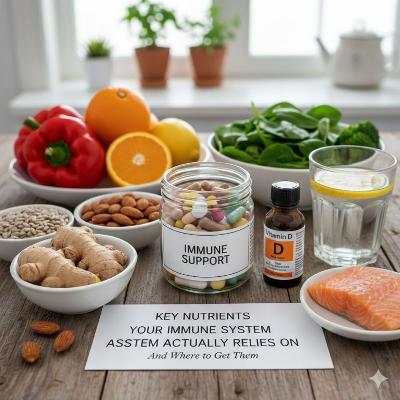Building muscle isn’t just about lifting heavy weights; it’s a holistic process that involves strategic training, balanced nutrition, and dedicated recovery. At wellhealthorganic.com/how-to-build-muscle-know-tips-to-increase-muscles, we’re committed to guiding you through the essentials of muscle building to help you achieve your fitness goals efficiently and effectively. Whether you’re a seasoned gym-goer or a beginner, these expert tips will help you build muscle and enhance your strength.
1. Master the Fundamentals of Muscle Growth
Muscle growth, or hypertrophy, happens when muscle fibers undergo stress and then repair, growing back stronger. To optimize this process, consider the following principles:
- Progressive Overload: Continuously challenge your muscles by increasing the weight, reps, or intensity of your workouts. This gradual escalation ensures that your muscles adapt and grow.
- Consistency is Key: Regular exercise, combined with a balanced diet and sufficient rest, forms the backbone of muscle development. Aim to stay committed to your fitness routine.
- Recovery: Allow your muscles time to repair and grow by incorporating rest days and proper nutrition into your regimen.
2. Craft a Comprehensive Workout Plan
An effective muscle-building program combines various elements to target different muscle groups and promote overall strength. Here’s how to structure your workouts:
Strength Training
- Focus on Compound Movements: Exercises like squats, deadlifts, bench presses, and pull-ups engage multiple muscle groups, leading to greater muscle stimulation and growth.
- Incorporate Isolation Exercises: Add movements such as bicep curls, tricep extensions, and leg lifts to target specific muscles and enhance definition.
- Optimal Sets and Reps: Aim for 3-4 sets of 8-12 reps per exercise. This rep range is effective for stimulating muscle growth and building endurance.
- Rest Between Sets: Rest for 60-90 seconds between sets to maintain workout intensity and muscle engagement.
Cardiovascular Exercise
- Balance Cardio and Strength: While strength training is crucial, moderate cardio can support overall fitness and aid recovery. Incorporate activities like brisk walking, cycling, or swimming 2-3 times per week.
Training Frequency
- Split Routines: Consider a split routine where you train different muscle groups on separate days (e.g., chest and triceps one day, back and biceps another). This allows for focused workouts and adequate recovery.
- Full-Body Workouts: Alternatively, full-body workouts 3 times a week can be effective for beginners or those seeking overall muscle development.
3. Fuel Your Muscles with Proper Nutrition
Nutrition is a critical component of muscle building. To support muscle growth, focus on:
Protein Intake
- Role of Protein: Essential for muscle repair and growth, aim for 1.2-2.2 grams of protein per kilogram of body weight daily.
- Protein Sources: Include high-quality proteins such as lean meats, poultry, fish, eggs, dairy products, legumes, and plant-based options like tofu and tempeh.
Carbohydrates and Fats
- Carbohydrates: Provide the energy needed for intense workouts and recovery. Opt for complex carbs like whole grains, fruits, and vegetables.
- Healthy Fats: Essential for hormone production and overall health, include sources like avocados, nuts, seeds, and olive oil.
Hydration
- Importance: Proper hydration supports muscle function and recovery. Drink plenty of water throughout the day, especially before, during, and after workouts.
Meal Timing
- Pre-Workout Nutrition: Consume a balanced meal with protein and carbs 1-2 hours before exercising to fuel performance.
- Post-Workout Nutrition: After your workout, eat a meal rich in protein and carbs within 30-60 minutes to aid muscle recovery and replenish glycogen stores.
4. Prioritize Rest and Recovery
Recovery is crucial for muscle growth. Here’s how to optimize it:
Quality Sleep
- Importance: Aim for 7-9 hours of quality sleep per night. Sleep is essential for muscle repair, hormone regulation, and overall recovery.
- Tips: Establish a regular sleep schedule, create a restful environment, and avoid screens before bedtime.
Active Recovery
- Techniques: Engage in light activities like stretching, yoga, or gentle walks on rest days to promote blood flow and reduce muscle soreness.
- Foam Rolling: Use a foam roller to alleviate muscle tension and enhance flexibility.
Avoid Overtraining
- Recognize Overtraining: Symptoms include persistent fatigue, decreased performance, or increased susceptibility to illness.
- Prevention: Ensure you have adequate rest between intense workouts and listen to your body’s signals.
5. Track Your Progress
Monitoring progress helps you stay motivated and make necessary adjustments. Here’s how to effectively track your muscle-building journey:
- Workout Log: Keep a detailed record of your exercises, weights, sets, and reps to track improvements and identify areas for growth.
- Body Measurements: Regularly measure key areas like arms, chest, waist, and legs to assess muscle size and body composition changes.
- Photographs: Take progress photos to visually document changes in your physique and muscle development.
6. Set Goals and Stay Motivated
Setting specific, achievable goals can drive your muscle-building efforts. Here’s how to stay on track:
- Short-Term Goals: Focus on incremental improvements, such as increasing weight lifted or adding an extra set to your routine.
- Long-Term Goals: Aim for broader objectives, like achieving a specific body composition or reaching a new fitness milestone.
Conclusion
Building muscle is a multifaceted process that requires a combination of strategic training, proper nutrition, and dedicated recovery. At wellhealthorganic.com/how-to-build-muscle-know-tips-to-increase-muscles, we provide you with the knowledge and tools to enhance your muscle-building journey. By applying these expert tips and maintaining consistency, you’ll be well on your way to achieving your fitness goals and developing a stronger, more resilient body.
For personalized advice and more insights into muscle building, explore our additional resources and expert recommendations.
Feel free to tweak or expand on any sections to better suit your audience or specific focus!






